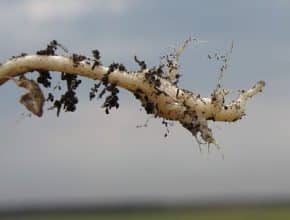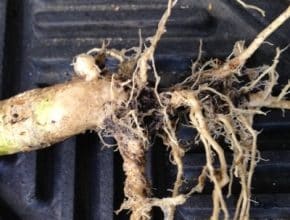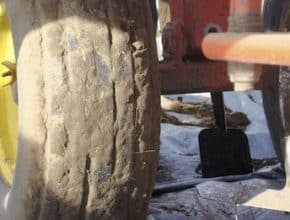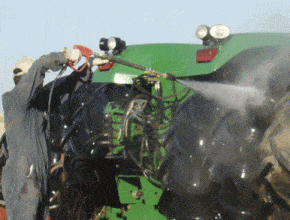Research has confirmed the presence of a different clubroot pathotype in the Edmonton region and none of the commercially available clubroot resistant varieties in Western Canada are effective at managing it. Stephen Strelkov, the University of Alberta researcher leading this project, has identified other resistance genes that could work, but they are not currently in commercial hybrids…
Clubroot
-
-
Clubroot-resistant canola is the best tool available to limit disease damage in fields infested with clubroot. However, an effective overall clubroot management strategy has to be top of mind in all years, not just canola years. As a soil borne disease, clubroot can spread no matter what crop is grown on a field. Any pass with the drill or cultivator,…
-
Manitoba has had two canola fields confirmed this month to have clubroot symptoms on plants. Last year, clubroot was confirmed in two soil samples in the province, but plant symptoms were not observed. Clubroot is expected to spread across the Prairies eventually. The disease was first detected in Manitoba in vegetable crops in 1925. It is not a surprise to…
-
Early detection makes clubroot easier to contain. By the time patches of clubroot infection are obvious in fields, clubroot spores may have been present for a while and may have already spread to neighbouring fields. Clubroot disease management plans will vary depending on the amount of disease and its severity, but growers in all regions should watch for the disease…
-
1. Have a plan to manage clubroot. Don't wait until clubroot manages you. Whether you're a farmer, agronomist, county/municipal staff, extension, or from the oil & gas industry, you need a clubroot management plan. A plan should include answers to the following: How will you quarantine a field? How will you plan your field work? When will you sanitize your…
-
The International Clubroot Workshop June 19-22 in Edmonton includes one day — Friday, June 21 — dedicated to clubroot extension. This is the day when growers, agronomists, municipal and county staff learn the latest in clubroot management, prevention and mitigation. Cost is $150 per day, and you are welcome to attend the whole workshop, space permitting…
-
Soil on seeding equipment is a key vector for the movement of clubroot spores from field to field. Cleaning dirt from equipment before leaving a clubroot-infested field is a good disease management practice. Avoid working in known clubroot-infested fields when soil is wet and more likely to stick to equipment…
-
If you don't have clubroot, be sure any used or demo’d equipment you buy is clean before you bring it home. Clean equipment before it leaves the auction site or the farm it comes from. Also check that the transport truck is clean. As a precaution, you may want to pressure wash the equipment again when it gets to your…






